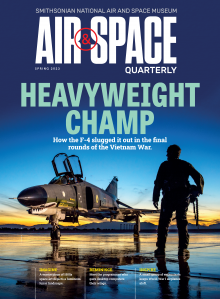The 40th anniversary edition of Microsoft Flight Simulator—released earlier this year—offers players the opportunity to fly a digitized version of one of the National Air and Space Museum’s most famous aircraft: the Spirit of St. Louis, which Charles Lindbergh gifted to the Museum shortly after his epic trans-Atlantic flight in 1927.
The decision to include the airplane was made by Jörg Neumann, the head of Microsoft Flight Simulator, who sees it as the first step on a long journey of using digital media as a means of preserving historic aircraft that might otherwise be lost to future generations.
“These machines are amazing, but they’re vulnerable to the thief of time because of metal fatigue and cloth that goes away,” he explains. “It dawned on me that we are in a moment where we can still preserve some of those aircraft digitally.”
Neumann has been an aviation geek since he was a kid growing up in Germany. Ironically, his interest in history and authenticity left him unimpressed by an early Apple II version of Flight Simulator. “It was a little bit too abstract for me at the time,” he says.
After a long career as a designer and producer in other genres of computer games, Neumann oversaw the 2020 reboot of Flight Simulator, a franchise overhaul whose hallmarks were extraordinary visual accuracy and a highly sophisticated atmospheric model. For the 40th anniversary edition, Neumann wanted to throw in a few “hero” airplanes as a bonus.
The Spirit of St. Louis was at the top of his list. Shortly after he started to investigate the various reproductions that are out there, he had a realization: “I said, ‘Why don’t I forget about replicas and whatnot and go to the actual source?’ ”
Eventually, Neumann got in touch with the Museum. Better still, the Smithsonian’s digitization program office had already scanned the Spirit of St. Louis and welcomed the idea, so Neumann was able to use the data in the simulation. “Hopefully, it’s just the beginning,” he says.
The Bell X-1, for example, has also been scanned. And the Museum has a pristine example of his favorite airplane, the Junkers Ju 52. Meanwhile, he’s looking to include airplanes from other museums.
“I have teams flying all over the planet, trying to digitize, sound record, and get as much information as we can possibly have about these aircraft,” he says. “If we do a good job, we can preserve these aircraft digitally, and 100 years from now, people will still be able to ‘fly’ them.”
This article is from the Spring issue of Air & Space Quarterly, the National Air and Space Museum's signature magazine that explores topics in aviation and space, from the earliest moments of flight to today. Explore the full issue.
Want to receive ad-free hard-copies of Air & Space Quarterly? Join the Museum's National Air and Space Society to subscribe.


